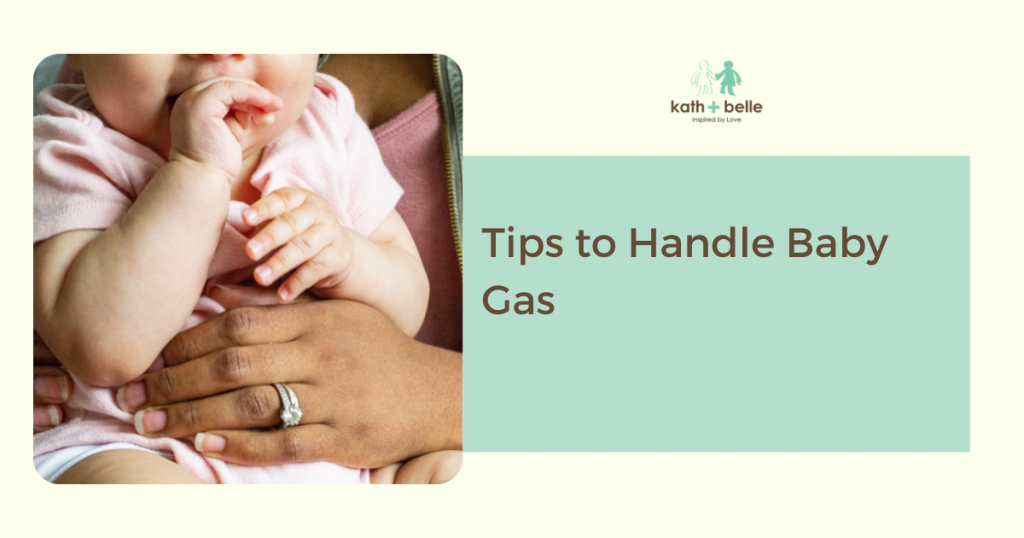Latest News
Kath + Belle | Tips to Handle Baby Gas
What is Baby Gas?
Welcome to parenthood where crying and laughing babies are common. Another common thing that you should know is why your baby is so gassy. There is no surprise here, it’s normal for babies to pass gas 13-21 times a day. You’ll start to notice the gas issues right away or when babies are just a couple of weeks old.
So, what is baby gas? Infants are gassy because of developing and immature digestive systems. It is an usual experience during the first 3 months of life when your little baby’s digestive tract is still maturing. Infants have lots of opportunities throughout the day and night to swallow too much air. Not to mention the extra air taken when they cry.
Some other reasons include incorrect feeding positions, too much lactose, overfeeding, allergies or food intolerances. Even with the perfect feeding position, your baby can still have gas because of microflora in his/her forming intestine. Microflora is needed to effectively digest foods.
Causes of Gassy Baby
Baby gas has several possible causes:
- Excessive crying can fill your baby’s tummy with air.
- Incorrect feeding position leads your baby to swallow too much air.
- Constipation.
- Developing digestive tract where it’s still learning to process milk, food, stool and gas effectively.
- Sensitivity to certain baby’s formulas or foods in mom’s diet.
Symptoms of Baby Gas
Gassy babies are normal. Start to notice on these symptoms and signs when your little one is having more gas in the tummy:
- Excessive burping
- Swollen and bloating abdomen
- Spitting up – sign of gas build up within the stomach
- Having trouble taking a nap or sleep
- Baby seems to be unhappy all the time
Your baby may have trouble eating and sleeping. Baby gas can be one of the reasons, especially other signs that come with it. Talk to your doctor for a diagnosis.
Tips to Handle Baby Gas
Kath + Belle is here to share some tips on what to do to a gassy baby.
- Burp Your Baby Before & After Feeding – Infant discomfort is caused by swallowing air during feedings. Give your baby a gentle back pat before and during the middle feeding session to get rid of swallowed air before it travels to the baby’s bowels.
- Right Feeding Angle – Keep your baby’s head and neck elevated above the stomach while feeding. For bottle feeding, tilt the bottle at an angle that fills the whole nipple with milk. Otherwise, your baby will suck in more air.
- Using the Right Bottle & Baby Formula – Troubles can come from the feeding utensils too. The right feeding bottle can prevent air from flowing along with the milk. Switching formulas may help reduce gas symptoms.
- Tummy Rub – Gently rub their tummy in a clockwise motion. Massaging in clockwise motion helps to move gas along the intestinal tract. You can use a plant based or toxic chemical free lotion to moisturise his/her skin too.
- Baby Bicycle Kicks – Softly and gently move your baby’s legs back and forth as if he/she is riding a bicycle, loosening trapped gas in the intestines.
